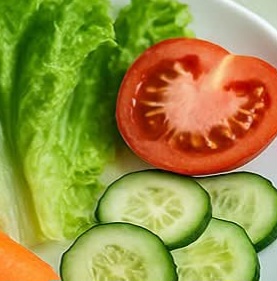If you love seeing your plants thrive but want to avoid the cost and chemicals of store-bought fertilizers, you’re in luck. Many powerful plant boosters are hiding right in your kitchen. Homemade fertilizers not only save you money but also help the environment and give you control over what goes into your garden. Whether you’re a seasoned gardener or just starting out, these 12 easy homemade fertilizers are simple to make and use—no special equipment or expertise required.
Why Choose Homemade Fertilizers?Homemade fertilizers offer several benefits that go beyond just nourishing your plants:Cost-Effective: Most homemade fertilizers use kitchen scraps or household items you’d otherwise throw away, saving you money on commercial products.Eco-Friendly: By reusing waste, you reduce landfill contributions and minimize chemical runoff that can harm local ecosystems.Customizable: You control the ingredients, so you can tailor the nutrients to your plants’ needs and avoid unwanted chemicals.Soil Health: Homemade fertilizers improve soil texture, water retention, and encourage beneficial microorganisms, creating a healthier growing environment for your plants.Ready to give your plants a natural boost? Here are 12 homemade fertilizers you can start using today.1. Banana Peels: Potassium PowerhouseBanana peels are rich in potassium, an essential nutrient that helps plants grow strong stems, resist disease, and produce flowers and fruit. Simply bury banana peels near the roots of your plants or soak them in water for a few days to create a nutrient-rich “banana tea.” Pour this liquid around your plants for a gentle, natural fertilizer.How to Use:Chop peels and bury them 1–2 inches deep near plant roots.Soak peels in water for 2–3 days, then use the water to feed your plants.2. Coffee Grounds: Boost for Acid-Loving PlantsUsed coffee grounds are a fantastic source of nitrogen, which is vital for leafy growth. They’re especially helpful for acid-loving plants like azaleas, blueberries, and tomatoes. Coffee grounds can also improve soil structure and attract earthworms.How to Use:Sprinkle used coffee grounds around the base of your plants.Mix into compost or soil to increase nitrogen content.3. Eggshells: Natural Calcium SourceEggshells are packed with calcium, which helps prevent blossom end rot in tomatoes and peppers. Crushed eggshells also improve soil drainage and deter pests like slugs and snails.How to Use:Rinse and dry eggshells, then crush them into small pieces.Sprinkle around the base of plants or mix into the soil.4. Epsom Salt: Magnesium and Sulfur BoostEpsom salt contains magnesium and sulfur, nutrients that help plants absorb other essential minerals and promote lush, green growth. It’s particularly helpful for tomatoes, peppers, and roses.How to Use:Dissolve 1 tablespoon of Epsom salt in a gallon of water.Water your plants with this solution once a month.5. Molasses: Sweet Support for Soil MicrobesMolasses is rich in micronutrients and sugars that feed beneficial soil microbes, helping plants absorb nutrients more efficiently.How to Use:Mix 1–2 tablespoons of unsulfured molasses into a gallon of water.Use as a soil drench or spray on leaves.6. Aquarium Water: Liquid Gold for PlantsIf you have a freshwater aquarium, don’t throw away the water during cleanings. Used aquarium water is full of beneficial nutrients from fish waste, making it an excellent, gentle fertilizer.How to Use:Water your plants with the old aquarium water (as long as it’s not salty or treated with chemicals).7. Wood Ash: Potassium and Calcium for Strong GrowthWood ash from untreated wood is a good source of potassium and calcium. It helps balance soil pH and strengthens plant cell walls.How to Use:Sprinkle a small amount around your plants and gently mix into the soil.Avoid using too much, as it can raise soil pH excessively.8. Gelatin: Nitrogen for Leafy GrowthUnflavored gelatin provides a quick nitrogen boost, which is especially helpful for houseplants and leafy greens.How to Use:Dissolve one packet of unflavored gelatin in one cup of hot water.Add three cups of cold water, then use to water your plants monthly.9. Milk: Calcium and Protein for Healthy PlantsMilk isn’t just for people—plants can benefit from its calcium and protein content, too. It also helps prevent some fungal diseases.How to Use:Mix equal parts milk and water.Pour around the base of your plants or spray on leaves as a foliar feed.10. Seaweed: Mineral-Rich Growth BoosterSeaweed is loaded with minerals and natural growth hormones that stimulate root development and overall plant health.How to Use:Rinse fresh seaweed to remove salt, chop, and soak in water for a few days.Use the liquid to water your plants or mix chopped seaweed into compost.11. Vegetable Scraps: Nutrient-Rich BrothDon’t toss those carrot tops or potato peels! Boiling vegetable scraps creates a nutrient-rich broth that can be used to water your plants.How to Use:Boil vegetable scraps in water for 15–20 minutes.Cool, strain, and use the liquid to water your plants.12. Weed Tea: Recycle Weeds into Plant FoodWeeds absorb nutrients from the soil—why not return those nutrients to your garden? Steeping weeds in water creates a “weed tea” that’s packed with plant food.How to Use:Fill a bucket with pulled weeds and cover with water.Let steep for 1–2 weeks, stirring occasionally.Strain and dilute the liquid (1 part tea to 10 parts water) before using as fertilizer.Tips for Using Homemade FertilizersStart Small: Try one fertilizer at a time and observe how your plants respond.Don’t Overdo It: More isn’t always better—too much fertilizer can harm plants.Compost Wisely: If you compost, many of these items can go straight into your compost pile for slow-release nutrition.Avoid Treated Materials: Only use untreated wood ash, and avoid aquarium water with chemicals or salt.The Bottom Line: Healthier Plants, Happier HomeHomemade fertilizers are a simple, sustainable way to keep your plants healthy and your wallet happy. You’ll reduce waste, save money, and know exactly what’s feeding your garden. With these easy recipes, anyone can become a more eco-friendly and successful gardener.Share this with a friend who loves gardening!Want more tips? Explore more home and garden ideas on our site.This article is for informational purposes only and does not substitute professional medical advice. Consult your doctor before making health changes.I Stopped Buying Fertilizer After Discovering These 12 Household Hacks
